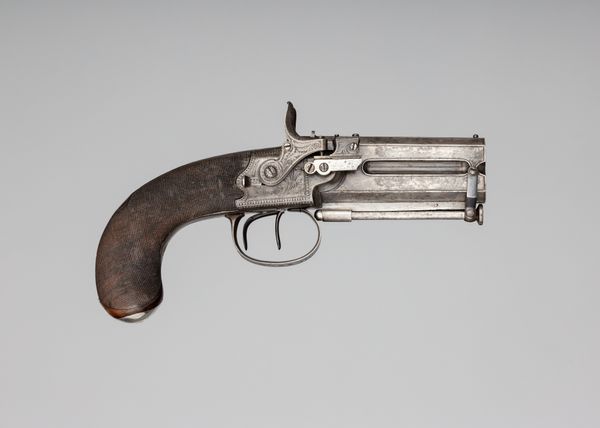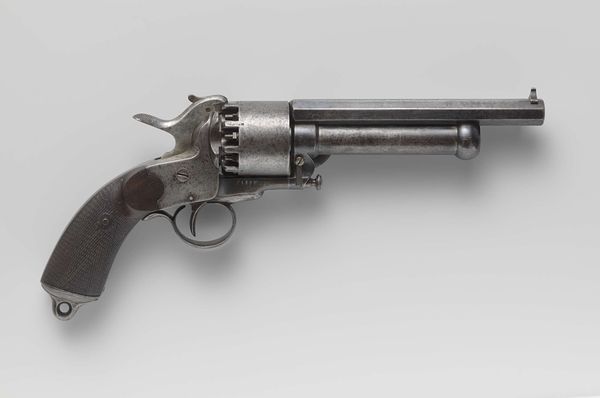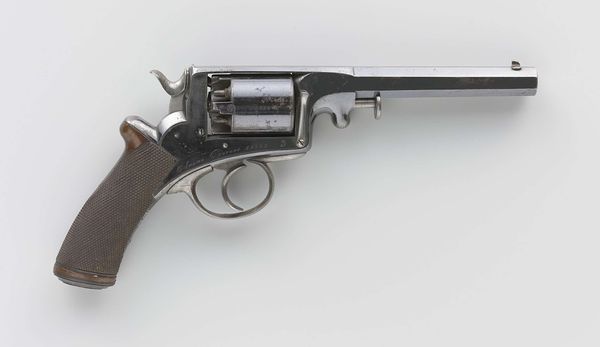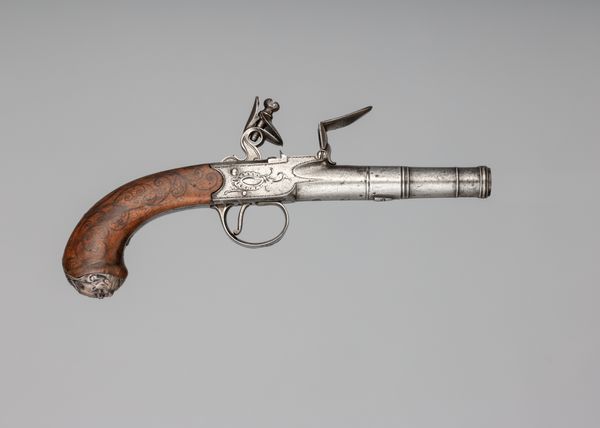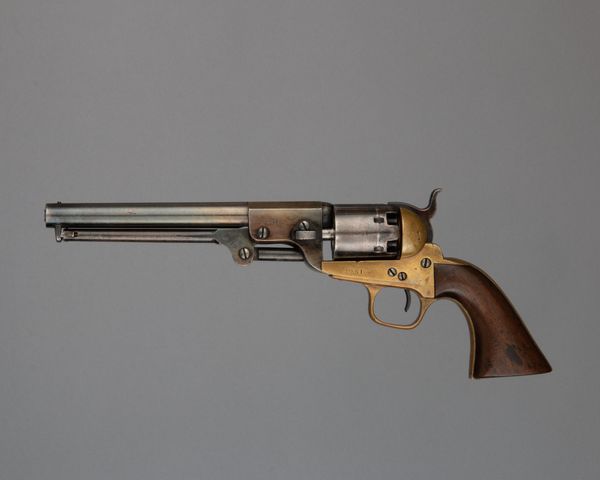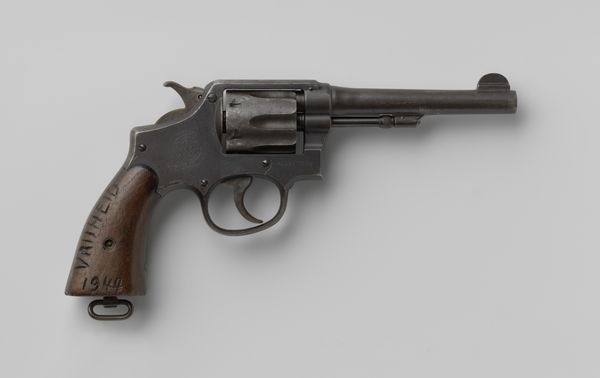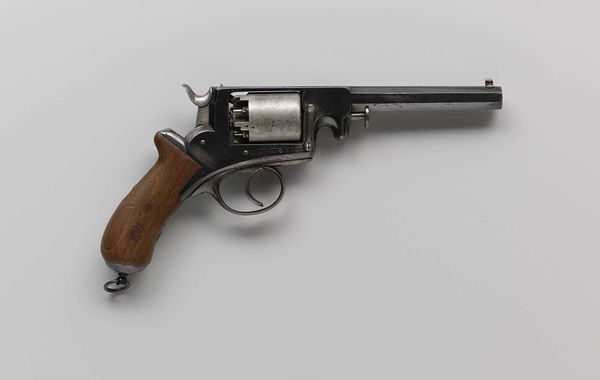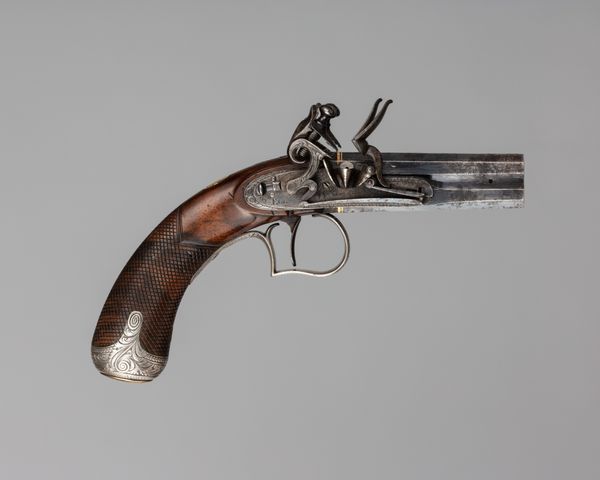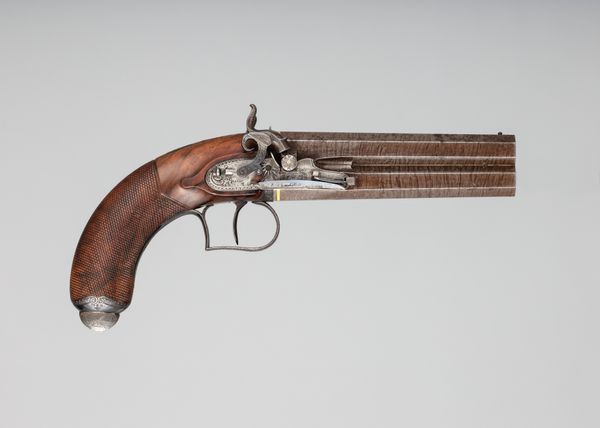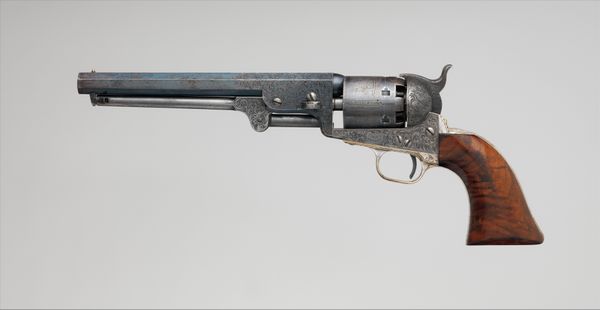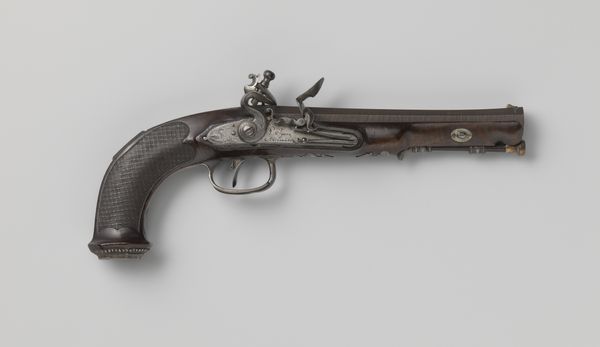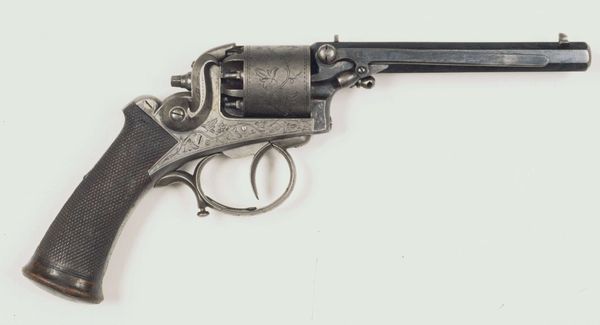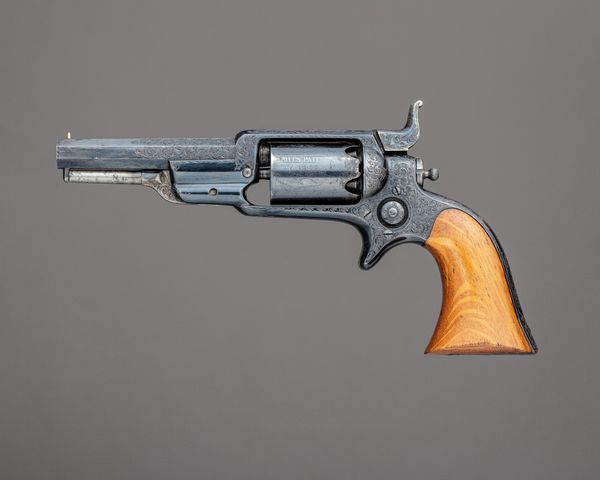
Smith and Wesson .44 New Model No. 3 Single-Action Revolver, serial no. 25120 1863 - 1913
0:00
0:00
metal, sculpture
#
metal
#
sculpture
#
united-states
#
history-painting
#
decorative-art
#
realism
Dimensions: L. 11 in. (27.9 cm); L. of barrel 5 in. (12.7 cm); Cal. .44 in. (11.2 mm); Wt. 2 lb. 8 oz. (1123 g)
Copyright: Public Domain
Editor: Here we have a Smith and Wesson .44 New Model No. 3 Single-Action Revolver, dating anywhere from 1863 to 1913. It's quite ornate; the handle is covered in engravings. It’s a beautiful object, but obviously meant for violence. What do you see when you look at it? Curator: I see a complicated dialogue about American identity. On one hand, the intricate carvings evoke a sense of artistry, elevating it beyond mere utility. On the other hand, it's undeniably a tool of force, a symbol often linked with the expansion westward and the conflicts inherent in that era. Do you think the decoration celebrates that violent history, or tries to obscure it? Editor: I hadn’t thought of that tension. It’s difficult to say! I initially saw it as decorative art. Almost like it was designed for some sort of powerful wealthy person, some sort of statement of power and wealth... Curator: That's certainly a valid interpretation. Wealthy ownership, access to advanced technology and arms – these things were undeniably social signifiers. Now consider its function not just as a weapon, but also a commodity. Its circulation reveals distribution networks, technological advancements, labor practices. Its decorative element, intended for consumer appeal, intersects with both economic and social histories. Does knowing this complicate your perception? Editor: Yes, definitely. Thinking about the economic impact opens my eyes. The details on the revolver – the labor, the material, its movement from the factory to a potential owner – become clearer now. It forces a certain degree of accountability that might otherwise have remained in the distant background. Thank you for drawing attention to it. Curator: My pleasure. Examining the multiple contexts transforms a seemingly straightforward artifact into a reflection on complex historical narratives. It demonstrates how we project meanings onto objects and also how material things shaped our lived experiences and values.
Comments
No comments
Be the first to comment and join the conversation on the ultimate creative platform.
